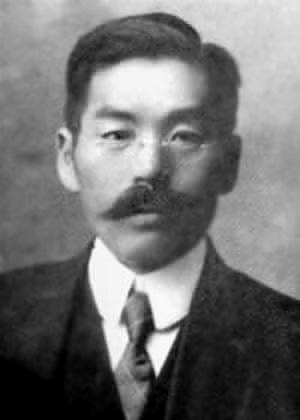A Tale of Survival and Cultural Clash: Masabumi Hosono's Titanic Story
The sinking of the RMS Titanic in 1912 is one of the most infamous maritime disasters in history, claiming the lives of over 1,500 people. Among the survivors was Masabumi Hosono, a Japanese civil servant who found himself at the center of controversy and faced disgrace upon his return to his homeland. Hosono's story is a complex one, marked by cultural misunderstandings, societal pressures, and personal struggles.
Masabumi Hosono was born in 1870 in Fukushima, Japan. He pursued a career in civil service and eventually became a civil servant in the Ministry of Transport. In 1912, he was sent to the United States as part of a delegation attending a convention in Mexico City. On his way back to Japan, he booked a first-class ticket aboard the Titanic.
When the Titanic struck an iceberg and began to sink, chaos ensued. Hosono managed to find a place in one of the lifeboats meant for women and children. His survival, however, would soon become a source of controversy and disgrace in his home country.
In Japanese culture, the concept of "gyokusai" (meaning "shattered jewel") holds great significance. It refers to the expectation that individuals sacrifice themselves for the greater good, particularly during times of national crisis. Hosono's survival, despite the availability of limited lifeboats, was seen by many in Japan as an act of cowardice and a betrayal of this cultural value.
Upon returning to Japan, Hosono faced public scrutiny and condemnation. He was labeled a coward and a disgrace to his nation. His employers at the Ministry of Transport even demoted him from his position as punishment for surviving the disaster. The intense pressure and criticism took a toll on Hosono's mental health, leading him to suffer from depression and anxiety.
The controversy surrounding Hosono's survival can be partially attributed to cultural misunderstandings. In Western societies, the survival instinct and individual self-preservation are generally considered acceptable. However, in Japan, where the collective is highly valued, personal sacrifice for the greater good is often prioritized. The clash of these cultural norms amplified the disgrace that Hosono faced upon his return.
It is important to consider the circumstances and context in which individuals make decisions. The chaos and panic on board the sinking Titanic made it difficult for anyone to think clearly and act rationally. Hosono's survival can be viewed as a product of those circumstances, rather than a deliberate act of selfishness.
In recent years, there has been a growing recognition of the unfair treatment and harsh judgment that Masabumi Hosono faced. Efforts have been made to reassess his story and acknowledge the immense pressure he endured. Some argue that he should be seen as a survivor rather than a disgrace, highlighting the importance of empathy and understanding.
Above Photo Sinking of the Titanic by Willy Stöwer (1864–1931).
A Tale of Survival and Cultural Clash: Masabumi Hosono's Titanic Story
Masabumi Hosono
Masabumi Hosono's story is a reminder of the complex nature of human behavior and the impact of cultural expectations. While his survival may have been seen as a disgrace at the time, it is essential to approach historical events with a nuanced understanding and consider the multitude of factors at play. By doing so, we can learn valuable lessons about compassion, empathy, and the consequences of societal pressures.
Comments
Post a Comment